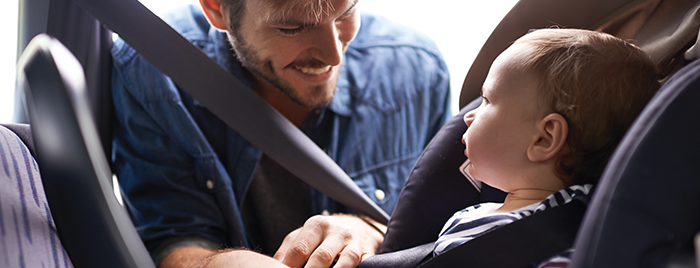While it’s a chore most parents dread, properly installing a car seat is one of the most important things they can do to protect their child. Yun Seok Kang, Ph.D., a research scientist at the Injury Biomechanics Research Center (IBRC) at The Ohio State University, is working toward making child restraint systems (CRS) even safer. Kang’s lab accesses Ohio Supercomputer Center (OSC) systems for modeling and simulation to understand occupant interaction with restraint systems and advise the most effective child restraint protocols.
Vehicles and CRS manufactured on and after Sept. 1, 2002, in the U.S. are federally mandated to include the Lower Anchors and Tethers for Children, or LATCH, system. This incorporates two lower anchors that secure to the vehicle’s seat and a top tether that attaches to the vehicle roof, floor, shelf or seatback. Current safety standards test the strength of these anchors and tether by applying force for 24 to 30 seconds at a time. A weakness to this evaluation is the dynamic conditions of a crash are not taken into account.
“The thing about car accidents, it’s not like quasi-static loading,” Kang said. “It’s dynamic loading and high energy with a large force in a very short duration applied to the LATCH.”
Additionally, federal standards do not evaluate how much load the top tether can withstand independent of the lower anchors. To analyze this, Rakshit Ramachandra, a biomedical engineering Ph.D. candidate in IBRC, developed a computer model with a CRS and an anthropomorphic test device (ATD) placed on a foam bench. Kang’s team then performed scenarios by running simulations of high-energy impacts replicating physical crash tests using OSC resources. The team investigated the effects of two different CRS models, three levels of foam stiffness and four top tether locations.
“Each of these simulations required at least 36 to 48 hours to run on our single standalone workstation,” Ramachandra said. “These simulations when run on OSC were significantly shorter in duration, I would say more like 4 to 5 hours.”
After 180-plus simulations, they found that the tether experienced the largest load, or greatest force, when secured to the roof of the vehicle and the smallest load when secured to the vehicle seatback. This information can help vehicle and CRS manufacturers optimally design safety systems.
“That’s why we love using OSC computational power,” Kang said. “And that helps our children.”
###
Written by Audrey Carson
Project Lead: Yun Seok Kang, Ph.D., The Ohio State University
Research Title: Dynamic top tether loads in various anchor locations in side impacts
Funding Source: Center for Child Injury Prevention Studies (CChIPS)
Website: ibrc.osu.edu/research/cchips

